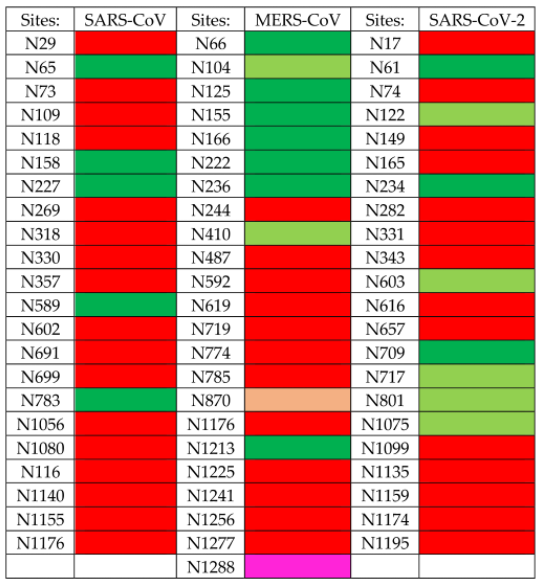A group from Université Paul Sabatier, Toulouse, France, etc. has reported on Man-specific lectins showing anti-viral properties against SARS-CoV-2, SARS-CoV, and MARS-Cov.
https://www.mdpi.com/2073-4409/10/7/1619/htm
Man-specific lectins from plants, algae, fungi, and bacteria, have been largely studied with respect to their anti-viral properties against different types of enveloped viruses, including HIV-1, papilloma virus, herpes virus, hepatitis C virus, and Ebola virus. In this respect, the algal lectin griffithsin, the cyanobacteria lectins cyanovirin, actinohivin, and microvirin, and various GNA-related lectins like NPA and ASA have been particularly well documented. Most of these Man-specific lectins prevent the virus replication, at least under in vitro conditions, by interfering with the Man-containing N-glycans present on the cell surface of the virion envelope.
Glycans of the S-glycoproteins forming the spikes of SARS-CoV, MERS-CoV and SARSCoV-2, consist of high-mannose glycans and often sialylated N-glycans that predominantly occupy their N-glycosylation sites. However, depending on the coronaviruses, some discrepancies occur between the distribution of the two types of glycans on the surface of the virion, which introduces some diversity in the glycan shield covering the coronavirus spikes.

Figure explanation: Sites containing (almost) exclusively complex glycans (colored red), high-mannose glycans (colored green), and hybrid glycans (colored magenta). Sites harboring a mixture of complex glycans, high-mannose glycans, and a few hybrid glycans (pink), predominant high-mannose glycans (pale green) and predominant complex glycans (orange). In the case of SARS-CoV-2, high-mannose glycans consist essentially of tri-antennary glycans GlcNAc2-Man5–9, but the major high-mannose structure seems to be GlcNAc2Man5.
Accordingly, Man-specific lectins from plants, algae, fungi, and bacteria, which differ slightly due to their fine sugar-binding specificities, offer a vast panel of glycan probes more or less adapted to the specific recognition of the different coronaviruses. In this respect, GNA-related lectins together with Man-specific lectins from algae and cyanobacteria, appear as glycan probes nicely adapted to the recognition of the high-mannose shield which predominates at the top of the MERS-CoV spike. Otherwise, legume lectins with a higher affinity for N-glycans possessing the trimannoside Manα1,3Manα1,6Man core, seem better adapted to the recognition of the N-glycans distributed predominantly at the top of the glycan shield from SARS-CoV and SARS-CoV-2.
